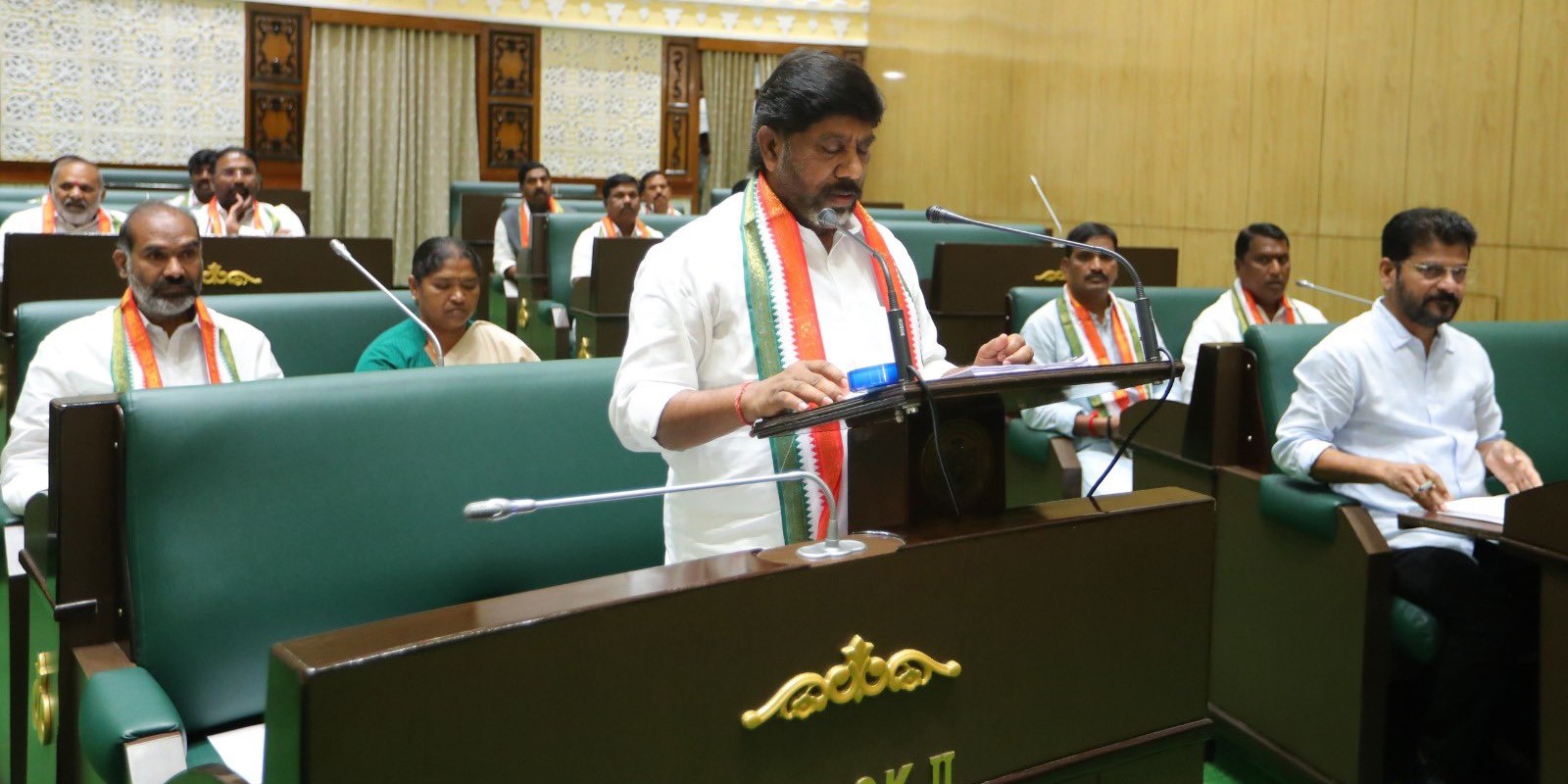Even though the budget speech did not mention the state was going to raise ₹62,112 crore through public debt, it was there in the fine print.
Published Jul 27, 2024 | 12:58 PM ⚊ Updated Jul 27, 2024 | 1:16 PM

Finance Minister Mallu Bhatti Vikramarka presenting the Telangana Budget. (X)
It is par for the course for any government to present an optically alluring annual budget. Telangana Finance Minister Bhatti Vikramarka was no exception.
He promised the moon to the farmers and other sections of the population when he presented a ₹2.91 lakh crore budget on Thursday, 26 July, the first full budget by the Congress government in Telangana.
Performing a clever trapeze act, the minister concealed the grey areas of the budget under the tapestry of generous allocations of funds for welfare and development. There was no mention in the budget speech that he was going to raise ₹62,112 crore through public debt, even though it was there in the fine print.
Even though Vikramarka had lamented the previous government raising ₹6.71 lakh crore over the last 10 years by way of debt, he did not hesitate to go in for another substantial lump of borrowing which would only make debt servicing more burdensome.
The budget estimated that the public disbursements would be ₹17,001 crore, including public debt repayment of ₹13,117 crore.
The socio-economic outlook, 2024, presented in the Assembly along with the budget, raised a red flag on the rising debt burden on the state.
It said the per capita debt burden has risen by 8.7 times during the last nine years. There was a rise in per capita income from ₹1,24,104 in 2014-15 to ₹3,47,299 in 2023-24.
Meanwhile, during the same period, Telangana’s total debt surged from ₹72,658 crore to ₹6,71,757 crore, an increase of over 824.5 percent. Consequently, per capita debt surged more than 8.7-fold, rising from ₹20,251 to ₹1,76,360.
The substantial rise in debt relative to income growth suggests a heavy dependence on borrowing to fund expenditure, potentially endangering fiscal sustainability.
The persistent rise in debt far outstripping income suggests that without stringent fiscal reforms, Telangana’s economic health could be at risk, necessitating measures to balance expenditure with revenue generation and reduce dependence on borrowing, the socio-economic survey said.
The finance minister, despite all-out efforts at cheeseparing, could not reduce the welfare bill. For the ₹2 lakh crop loan waiver alone, the state would be requiring ₹31,000 crore.
Since the state has already paid ₹6,035 crore to farmers, he allocated ₹26,000 crore in the budget. He also announced pruning Rythu Bharosa – a financial support scheme for farmers. It envisages paying ₹15,000 per acre for the two agriculture seasons. For this, the minister made an allocation of ₹15,075 crore.
If one takes a hard look at the figures, it becomes clear that a lot of window-dressing has been made to hide the malaise that is afflicting the state’s finances.
The revenue receipts are pegged at ₹2,90,814 crore of which ₹62,112 crore is expected to come by way of loans which would only add to the pile of debt that the state is already carrying. The fiscal deficit is projected at ₹49,255 crore even after raising of ₹62,112 crore debt.
Going by the past experience, the revenue receipts might not rise to the expectations for ₹2.91 lakh crore as indicated in the budget.
For instance, in 2023-24, the revised budget estimate of receipts was ₹2,26,095 crore as against the budget estimate of ₹2,89,672 crore which indicates a steep fall.
This year too the situation may not be very different. The state may go in for monetisation of its assets to bridge the fiscal deficit, but it may or not net as much revenue as is required.
As the days roll by, Vikramarka has to cut the coat according to the cloth. It means the budget for several welfare schemes might face drastic cuts. The excitement is expected to slowly change to one of frustration in the slower pace of receipts into the state treasury.
(South First is now on WhatsApp and Telegram)
